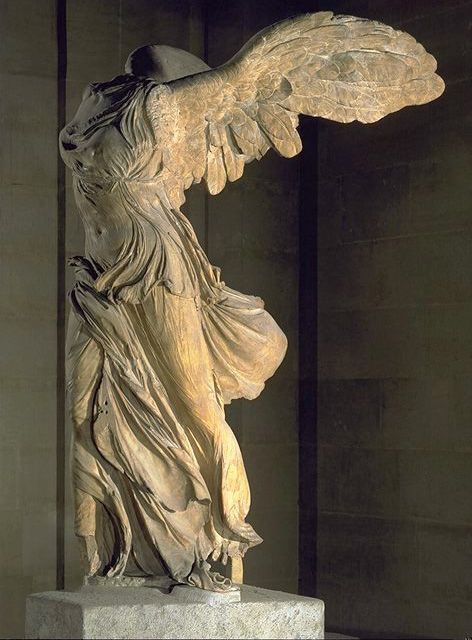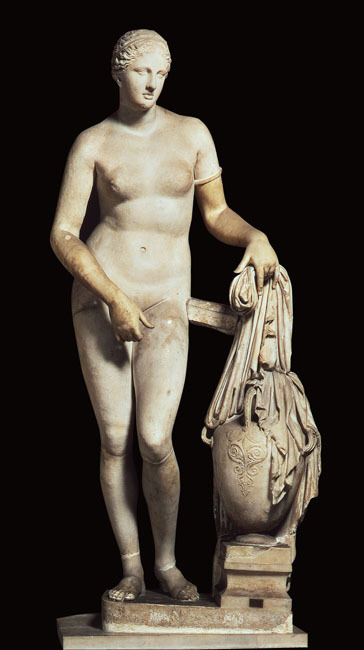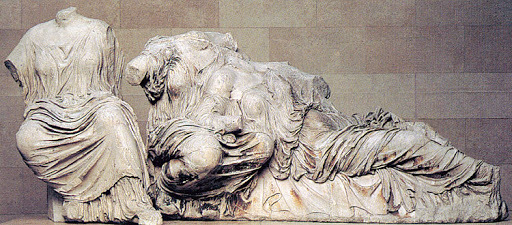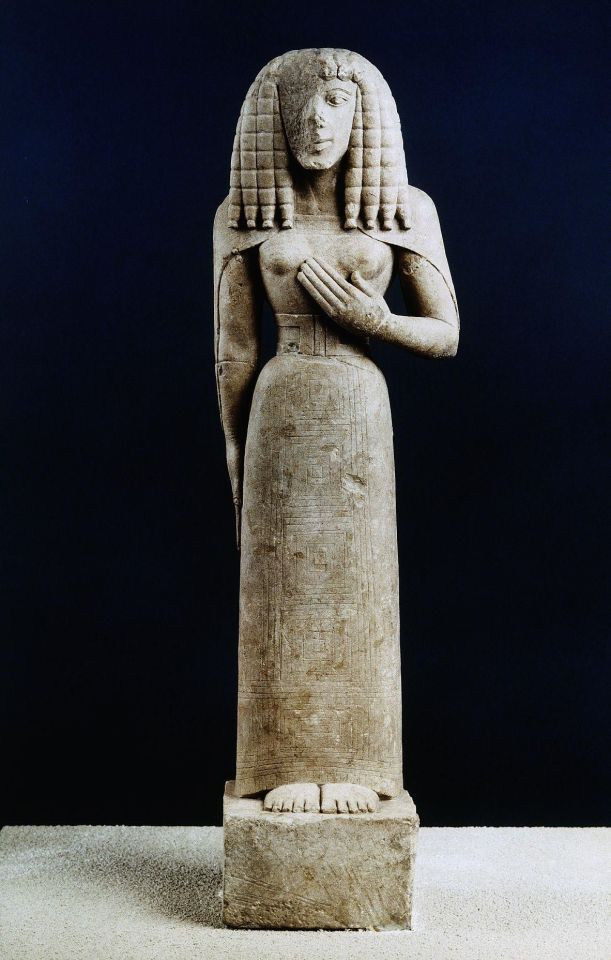Photo

Virgin of Jeanne d’Evreux, 1339
Silver gilt and enamel
2′ 3 1/2′’
Musee du Lourve, Paris
This piece was donated by Queen Jeanne d’Evreux. It is a outstanding example of Late French Gothic style. The Virgin’s pose is a close human portrayal of Mary and Jesus.
1 note
·
View note
Photo

Annunciation and Visitation, 1230 - 1255
Stone
Reims, France
Each statue is a biblical figure speaking to one another with their gestures. This piece was done by multiple artists with diverse styles. It is common in these pieces for biblical stories to be recreated.
1 note
·
View note
Photo

Morgan Madonna, 12th Century
Painted Wood
2′ 7′’
Museum of Art, New York
This small scale piece depicts the Virgin as a “Throne of Wisdom.” Her monotone expression and the textured wood is eye capturing.
0 notes
Photo

Virgin of Vladimir, Early 12th Century
Tempura on Wood
2′ 61/2′’ x 1′ 9′’
Tretyakov Gallery, Moscow
This painter created this piece depicting Mary as The Virgin of Compassion. She presses her cheek against her sons as she worries about his future.
0 notes
Photo

Nike of Samothrace, 190 BCE
Marble
8′ 1′’
Musee du Louvre, Paris
A popular piece from the Hellenistic Period, her pose is very inspiring and beautiful. It displays elegance and power. It’s placement in a fountain surrounded by splashing water creates a jaw dropping effect.
1 note
·
View note
Photo

Alexandros of Antioch-On-The-Meander
Venus De Milo, 150 - 125 BCE
Marble
6′ 7′’
Musee du Louvre, Paris
This piece displays the eroticism of many Hellenistic Statues. This artists version of the Goddess Aphrodite is more sexual compared to others. Her slipping garment teases the viewer.
26 notes
·
View notes
Photo

Praxiteles
Aphrodite of Knidos, 350 - 340 BCE
Marble
6′ 8′’
Musei Vaticani, Rome
The significance of this sculpture is it’s depiction of a nude Goddess. The artist, Praxiteles, was known for his ability to make marble appear like radiant, soft, flesh.
0 notes
Photo

Nike Adjusting Her Sandal, 410 BCE
Marble
3′ 6′’
Acropolis Museum, Athens
This piece’s significance is it’s portrayal of the Goddess Nike whose garments appear almost transparent. The folds of the clothing heavily define her figure as she lifts her foot to adjust her sandal.
0 notes
Photo

Three Goddesses, 438 - 432 BCE
Marble
4′ 5′’
British Museum, London
The Three Goddesses is a significant piece due to it’s shape. The thin and heavy folds of the clothing reveals 3 body types which are presumed to be Goddesses Hestia, Dione and Aphrodite.
0 notes
Photo

Peplos kore, 530 BCE
Marble
4′
Acropolis Museum, Athens
The significance of this sculpture is her 4 different garments. One being one Goddess were depicted wearing. Unfortunately, it is not known what Goddess this is due to her left hand being missing which is where her identifiable attribute would have been.
2 notes
·
View notes
Photo

Bust of Nefertiti, 1353 - 1335 BCE
Painted Limestone
1′ 8′’
Museen zu Berlin, Berlin
This sculpture is iconic. It was found in pristine condition in the workshop of the master sculptor, Thutmose. She is given a very thoughtful expression along with a beautiful curved neck.
0 notes
Photo

Portrait bust of a Flavian Woman, 90 CE
Marble
2′ 1′’
Museo Capitolini, Rome
This sculpture gives insight of the appearances of elegant woman at the time. His technique and detail is also noteworthy, for the details in the curled hair is immaculate.
1 note
·
View note
Photo

Old Woman, 150 - 100 BCE
Marble
4′ 1 5/8′’
Metropolitan Museum of Art, New York
Those of old age at the time were portrayed as low class and were portrayed as unsuitable references for sculpting. The ivy wreath around her head could mean she was bringing a offering of fruits and vegetables to the God Dionysius.
0 notes
Photo

Portrait Bust of Livia, Early First Century
Marble
1′ 1 1/2′’
Carlsberg Glyptotck, Copenhagen
The main attribute to pick up from this piece is Livia’s youthful appearance which were inspired by Greek Goddesses. Similar to Augustus, she never aged in portraits.
0 notes
Photo

Akhenaton, 1353 - 1335 BCE
Sandstone
13′
Egyptian Museum, Cairo
Akhenaton is a significant piece because of how it started both religious and artistic views. This figure is presented as sexless which was said to go against tradition.
0 notes
Photo

Menkaure and Khamerernebty, 2,490 - 2472 BCE
Greywacke
4′ 6 1/3′’
Museum of fine Arts, Boston
These two have been sculpted in a conventional pose that was often used for Egyptian sculptures. Their pose is significant as it appears to resemble the closeness between one another.
1 note
·
View note
Photo

Lady of Auxerre, 650 - 625 BCE
Limestone
2′ 1 1/2′’
Musee du Louvre, Paris
This is one of the earliest Greek stone sculptures. She resembles a maiden in a Daedalic style which was used around the 7th Century BCE. Her triangular face and figure resemble a geometric and abstract pattern.
18 notes
·
View notes